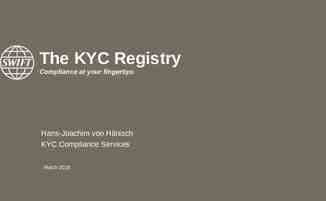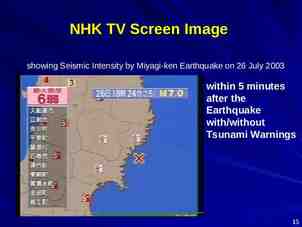ART 2640, Building Systems of Interior Environments Fall Semester
43 Slides2.26 MB

ART 2640, Building Systems of Interior Environments Fall Semester 2020 Tuesdays & Thursdays 10:30-11:50 Online Matthew Ziff, Associate Professor, Area Chair M. Arch, Architect, NCIDQ Office: W 325 Grover Center Office E-mail: [email protected] Heating, Ventilating, and Air Conditioning Systems

HVAC components were made famous in 1973 Renzo Piano and Richard Rogers won an international competition to design a new museum in Paris, France: the Pompidou Centre. The Pompidou Center (exterior) The Pompidou Center (interior)

HVAC Basics (11 minute video) How Central Air Conditioning Works (5:45 minute video)

HVAC: heating, ventilating, and air conditioning these are thermostats: they send a signal to the heating/cooling system

an hvac system can include: furnace condensing unit cooling coil thermostat ductwork registers & grilles heat pump dehumidifier room air conditioner ventilating fan ceiling fan

a typical residential furnace: uses natural gas, or fuel oil, or electricity to produce heat: a fan blows the heated air into a duct system that reaches throughout the entire house

round sheet metal ducts in a house

air is blown, from the furnace, into the ducts. ducts become smaller as they get farther from the furnace, and branch off into individual spaces.

ducts are either supply ducts, that bring air into a space, or return ducts, that take air from the space back to the heating unit

the systems components that run through the space above a ceiling (called the plenum)

HVAC

“Conditioned” space The main purpose of commercial HVAC (heating, ventilating, and air conditioning) systems is to provide the people working inside buildings with "conditioned” air so that they will have a comfortable and safe work environment. "Conditioned" air means that air is clean and odor-free, and the temperature, humidity, and movement of the air are within certain comfort ranges.

Many factors affect the way people respond to their work environment. Air quality is one of these factors. The American Society of Heating, Refrigerating and AirConditioning Engineers (ASHRAE) has established standards which outline air quality for indoor comfort conditions that are acceptable to 80% or more of a commercial building's occupants.

Indoor comfort conditions, sometimes called the "comfort zone," are between 68 and 75 degrees F. for winter and 73 to 79 degrees F. during the summer. Both these temperature ranges are for room air at approximately 50% relative humidity and moving at velocity of 30 feet per minute or slower.

Heat naturally flows from a higher energy level to a lower energy level. In other words, heat travels from a warmer material to a cooler material. The unit of measurement used to describe the quantity of heat contained in a material is a British thermal unit (Btu).

Typical hvac components

1. Fans to circulate the supply air (SA) and return air (RA). 2. Supply air ductwork in which the air flows from the supply fan to the conditioned space. 3. Air devices such as supply air outlets and return air inlets. 4. Return air path or ductwork in which the air flows back from the conditioned space to the mixed air chamber (plenum). 5. Outside air (OA) device such as an opening, louver or duct to allow for the entrance of outside air into the mixed air chamber.

6. Mixed air chamber to receive the return air and mix it with outside air. 7. Filter section(s) to remove dirt and dust particles from the mixed air. 8. Heat exchangers such as hot water coils, steam coils, refrigerant evaporators, or chilled water coils to add heat to or remove heat from the circulated air. 9. Auxiliary heating devices such as natural gas furnaces or electric heating elements. 10. Compressors to compress the refrigerant vapor and pump the refrigerant around the system.

11. Condensers to remove heat from the refrigerant vapor and condense it to a liquid. 12. Fans to circulate outside air across air-cooled condensers 13. Pumps to circulate water through water-cooled condensers; condenser water pump (CWP); and condenser water supply (CWS) and return (CWR). 14. Pump(s) to circulate hot water from the boilers through the hot water coils and back or to circulate chilled water from the chillers through the chilled water coils and back to the chillers.

15. For central systems, water or steam boilers as a central heating source. 16. For central systems, water chillers as a central cooling source. 17. For central systems, cooling towers with watercooled condensers. 18. Controls to start, stop, or regulate the flow of air, water, steam, refrigerant and electricity.

Commercial Chiller Systems A ‘chiller’ system is an hvac system usually large in size, usually used in big commercial use buildings.

Science: heat is transferred in three possible ways Radiation: an energy source transfers energy in a direct line to a surface (feeling the heat of the sun's light on your skin) Conduction: direct contact with a surface of a different temperature causes energy transfer (burning your finger when you touch a hot oven rack) Convection: energy transfer through fluid motion (hot air rises)

condensation on window glass: the cold outside air cools the piece of glass; the warm inside air contacts the cold glass; the moisture contained in the warm air ‘drops out’ of the warm air as water/condensation

very cold temperatures can cause warm air inside of a building to become ice on the cold piece of window glass

friday, february 10, 2006: the dew point temperatures around the country

What is ‘dew point’? The ‘dew point’ temperature is the temperature in degrees F, or C, at which the air can no longer hold the amount of water that is in it. Water vapor in the air literally falls out, as condensation on the ground, on windows, on your car, when the temperature drops below the point at which the air cannot hold the water any longer.

Heating devices include gas or oil burning central furnace wood stove heat pump electric radiator solar panel radiant heating coils in floors, or ceilings (these may be electric, water filled, or air filled)

Cooling methods/devices include natural ventilation air movement: fans window air conditioner central air conditioning system massive materials that have a long 'thermal lag' time, (such as brick, concrete, stone)

How a residential air conditioner works An air conditioner is a heat pumping component. It literally moves heat from inside to outside, or from outside to inside. Heat is ‘moved’ by using a refrigerant liquid that gets hot when compressed, and then turns very cold when de-compressed.

Heat pump

Vapor compression refrigeration cycle refrigerators, air conditioners, and heat pumps each provide cooling through this process (vcrc) this process is a true modern miracle, and it is based on the discovery that increased pressure creates heat. Putting pressure on a liquid coolant causes it to get hotter: de-pressurizing that liquid causes it to get cooler.

A heat pump's refrigeration system consists of a compressor and two coils made of copper tubing (one indoors and one outside), which are surrounded by aluminum fins to aid heat transfer. In heating mode, liquid refrigerant in the outside coils extracts heat from the air and evaporates into a gas. The indoor coils release heat from the refrigerant as it condenses back into a liquid. A reversing valve, near the compressor, can change the direction of the refrigerant flow for cooling as well as for defrosting the outdoor coils in winter.

When outdoor temperatures fall below 40 F, a less-efficient panel of electric resistance coils, similar to those in your toaster, kicks in to provide indoor heating. This is why air-source heat pumps aren't always very efficient for heating in areas with cold winters. Some units now have gas-fired backup furnaces instead of electric resistance coils, allowing them to operate more efficiently.

Most central heat pumps are split-systems -- that is, they have one coil indoors and one outdoors. Supply and return ducts connect to a central fan, which is located indoors.

Another look

Another explanation Heat pumps use electricity to transfer energy between indoor and outdoor air. Because they move heat rather than generate heat, these systems typically consume less electricity than electric-resistance heating systems. In cooling mode, heat pumps function like an air conditioner, moving heat from inside to outside the home. In heating mode, the refrigerant flow is reversed to extract lowtemperature heat from outdoors and deliver concentrated hightemperature heat to the home.

The biggest job an air conditioner has to do is to cool the indoor air. That's not all it does, though. Air conditioners monitor and regulate the air temperature via a thermostat. They also have an onboard filter that removes airborne particulates from the circulating air.

Air conditioners function as de humidifiers. Because temperature is a key component of relative humidity, reducing the temperature of a volume of humid air causes it to release a portion of its moisture, de-humidifying it.

That's why there are drains and moisturecollecting pans near or attached to air conditioners, and why air conditioners discharge water when they operate on humid days.

The cold side of an air conditioner contains the evaporator and a fan that blows air over the chilled coils and into the room. The hot side contains the compressor, condenser and another fan to vent hot air coming off the compressed refrigerant to the outdoors. In between the two sets of coils, there's an expansion valve. It regulates the amount of compressed liquid refrigerant moving into the evaporator.

Once in the evaporator, the refrigerant experiences a pressure drop, expands and changes back into a gas. The compressor is actually a large electric pump that pressurizes the refrigerant gas as part of the process of turning it back into a liquid. There are some additional sensors, timers and valves, but the evaporator, compressor, condenser and expansion valve are the main components of an air conditioner.

The parts of an air conditioner:

Heat pump limitations






